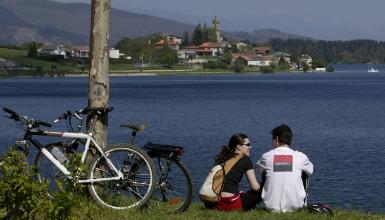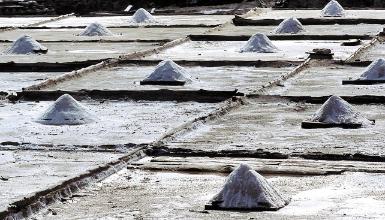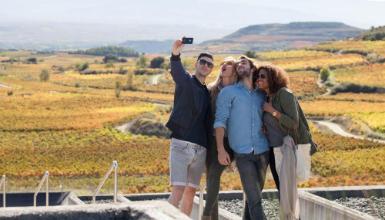Alava
Alava
Alava is singular. A series of distinguishing features set it apart from the other two of the three provinces making up the Basque Autonomous Community. An assortment of landscapes not to be found in Bizkaia and Gipuzkoa, a number of historical monuments reflecting its past use as a place of passage as opposed to the relative isolation of the north, the greater importance of the agricultural sector, a different demographic structure and even a different climate, all define the outstanding beauty of Alava. Furthermore, Alava is well known due to the excellent quality of its wines from Rioja Alavesa, the territory's southernmost region.
During history, pilgrims and travellers merged in Alava, leaving a part of their culture and traditions. For this reason, nowadays Alava has a rich historical heritage, full of magnificent monuments and buildings. Among the numerous historical treasures, the Roman archaeological site in Iruña-Veleia is worth mentioning. Furthermore, the road used by pilgrims and which goes through Llanada Alavesa, as well as the prehistorical remains in the southern mountainous areas and the southern valleys or even the white saltmines from Salinas de Añana, one of the most astonishing views of Euskadi.
We cannot forget mentioning Vitoria-Gasteiz, capital of both the Basque Country and of the province of Alava. Vast parks and gardens, pedestrian areas, a renovated medieval quarter an balanced development make the capital of Alava one of the cities with the best standard of living in Europe. It also houses over three-quarters of the Alavese population. Throughout the 20th century, but particularly in the recent decades, steady growth and the quality of life have given rise to a phenomenon of demographic concentration in this comfortable, warm, commercial, administrative, services and pedestrian-friendly city.
Natural spots and the wine culture
With the exception of the occasional area dedicated to industry (Llodio-Laudio, Amurrio, etc), Alava basically consists of small, rural villages dotted over the area with relatively few inhabitants. That is why this province has so many important natural areas, which, as a result of this scarce industrialisation are still in very good condition. These areas include the Valderejo Nature Reserve, Entzia, and Izki, the lakes of Laguardia and the three nature reserves shared with the provinces of the north: Gorbeia, Urkiola and Aizkorri.
Perhaps the best known region in Alava is that of the Rioja Alavesa, also worth visiting for its wines and its heritage rich in history and culture. Located on the southern extreme of the Basque Country, looking out over the river Ebro, this area has a number of different landscapes, walled villages and wine cellars just waiting to be discovered. Some of those cellars are real architectural masterpieces, such as Ysios, designed by architects Santiago Calatrava or the complex Marqués de Riscal, by Frank Gehry, a building similar to the Museum Guggenheim Bilbao.
Special offers
Information of interest
3,037.00
320266
Additional information




